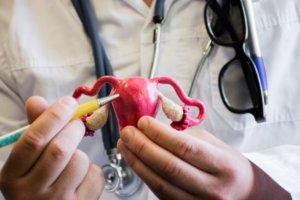Endometriosis facts our doctors want you to know
 Endometriosis can be a debilitating disease and one in which plenty of misconceptions can occur. Learn more about this disease with these 9 endometriosis facts our doctors want you to know.
Endometriosis can be a debilitating disease and one in which plenty of misconceptions can occur. Learn more about this disease with these 9 endometriosis facts our doctors want you to know.
Endometriosis is a common, frustrating disease for many women. Cells from the normal uterine lining – called endometrium – attach to structures outside the uterine cavity, such as the pelvic lining (peritoneum), ovaries, external bladder, and bowel as well as the posterior ligaments which support the uterus within the pelvis and the tissue between the vagina and rectum. Advanced disease can cause severe pain and infertility.
Endometriosis affects 6-10% of women of reproductive age, 50-60% of women and teenage girls with pelvic pain, and up to 50% of women with infertility. Although endometriosis is typically diagnosed between ages 25 – 35, the condition probably begins about the time that regular menstruation begins. A woman who has a mother or sister with endometriosis is six times more likely to develop endometriosis than women in the general population.
9 endometriosis facts that our doctors want you to know:
Women with endometriosis aren’t faking it.
We know the pain is real and more than just “really bad cramps.” Over time, cyclic inflammation of the endometriosis lesions cause scar tissue and adhesions to build up around it, giving the impression of the lesion increasing in size. Organs sometimes become bound together or anatomy is moved out of place causing simple everyday activities to be painful events.
Endometriosis pain isn’t just during that time of the month.
In fact, while the pain can be pretty bad before and during a woman’s period when cyclical hormone spikes cause endometriosis lesions to become inflamed, pain can occur at any time of the month.
Endometrial cells like to travel.
While endometrial lesions are found primarily in the pelvic cavity, on or under the ovaries, or behind the uterus, they can also grow to the bowel, bladder, lungs and other areas of the body. Some women have endometriosis so severe that lesions have been found on the membrane surrounding the heart and liver.
Endometriosis is hard to diagnose.
While most women with pelvic pain are suspected of having some degree of endometriosis, diagnosing it isn’t as easy as just getting a blood or urine test. On average in the US, it takes 10 years from symptom onset to receive an accurate diagnosis of endometriosis. Unfortunately, many endometriosis patients are misdiagnosed, often multiple times, leading to unnecessary and inappropriate treatment. The only way to accurately verify endometriosis is to undergo a diagnostic laparoscopy in which a biopsy is performed on suspected lesions and sent for pathology confirmation.
Medical management of symptoms can be really hard on the body.
One of the first treatments we often try for women with endometriosis is to prescribe continuous birth control pills, causing a woman to miss periods. This can often be a little unsettling to no longer have a period. Other drug treatments, such as Lupron, can cause a woman to go into a false menopause. This can, unfortunately, cause many of the same symptoms of menopause, such as hot flashes and mood swings.
We don’t know what causes some women to have endometriosis and others not.
For many years, doctors and scientists believed that retrograde menstruation (when endometrial cells get backed up in the fallopian tubes into the pelvis) was the main cause of endometriosis. However, it is now understood that 90% of women have retrograde menstruation and only 1 in 10 have endometriosis. More research is required to determine why retrograde menstruation affects women differently. Researchers do know that there may be a genetic component to endometriosis. Girls who have a close female relative are 5-7 times more likely to have it themselves, but more research is necessary to fully understand the genetic characteristics of endometriosis.
Endometriosis cannot be cured.
Even if surgically removed, endometriosis can come back. Even women who have had a hysterectomy to remove their uterus and often the ovaries, still may have the disease. Menopause may stop it, but oftentimes hormone therapy used to ward off symptoms of menopause will cause endometrial lesions to inflame and cause pain.
Sex can be really difficult.
Not surprisingly, many women with endometriosis also experience difficulty and pain with sexual intercourse. Different positions may help or a couple can compensate in other ways, but the reality is that the pain endometriosis causes during intimacy can lead to relationship problems.
Getting pregnant with endometriosis can be complicated.
Endometriosis is one of the top three causes of female infertility. Many women are unaware of their infertility or endometriosis until they attempt to get pregnant. In some women, endometriosis goes untreated and the disease progression allows the endometrial lesions to block the fallopian tubes and inhibit ovulatory functioning. Women with endometriosis-related infertility can still get pregnant, often using assisted reproductive technologies such as in vitro fertilization.
If you have think you may have symptoms of endometriosis, contact our Louisiana fertility specialists to learn what your options are.


